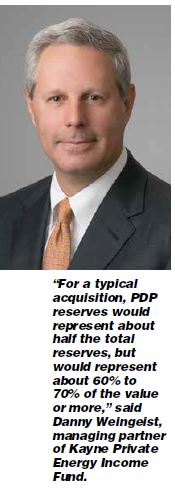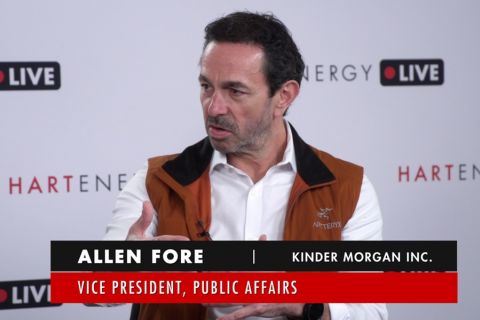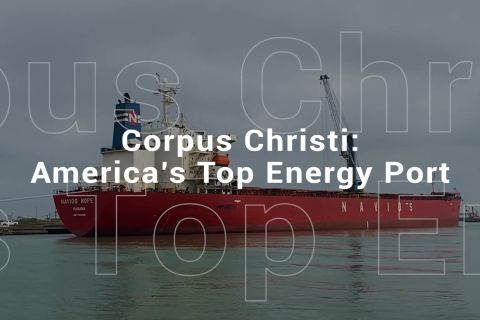Once upon a time, not so very long ago, there was a happy world where upstream companies had many options for disposing of their producing assets so they could focus on growth. Small E&Ps backed by private equity (PE) could sell to larger PE-backed E&Ps or to public companies. Long-lived producing fields were bought by MLPs where they would ease on down the production curve, throwing off hefty returns for unit-holders.
Then oil prices collapsed and many MLPs were caught with too much debt. But following the oil price collapse, MLPs either disappeared or no longer have the balance sheet to take on the volume of producing fields moving through the supply chain. PE might seem an unlikely answer, considering that proved-developed-producing (PDP) fields are doing well to deliver half the returns that PE prefers. But nature abhors a vacuum, and there is ready cash in the hands of some PE managers who are comfortable in the lower-for-longer environment.
These specialized operators and investors never went away; they just had a low profile in the shadow of the MLPs. PDP players tended to focus on conventional wells. But there are also PDP players that favor shale.
“For us PDP players, the exodus of the MLPs has created a buying opportunity,” said John Davis, president and CEO of Avad Energy Partners LLC. “The continuing divestiture of producing assets has created a vacuum because the MLPs were the high bidders for several years.
“The fact that they are no longer competing has enabled PDP players such as ourselves. When we make an acquisition, we typically also have some assets that are behind pipe, but only minimal PUDs.”
Despite the cyclical nature of the commodity-based industry, PDP players have long been in existence. The rise of the MLP model forced some investors and operators that focused on producing assets to change their focus or even sell out, but a few have endured. Start-ups and existing operators are actually returning to or branching into long-lived production. Avad is backed by PE provider Pearl Energy Investments LP. “Some PDP players from the past have stuck around, and there are also some new entrants,” said Davis. “Most of those that have been around for a while have had to stretch their risk profile in the past to include infill drilling and field expansion.”
While the terminology by which the group is known focuses on the commercial status of the field, there is a differentiation below ground as well. “PDP assets are mostly conventional reservoir developments,” explained
Growth and efficiency
“What investors on Wall Street want to know from public producers is ‘How are you going to grow production while maintaining capital efficiency?’” said Davis. “Wall Street values repeatability, and shale development has become a manufacturing process for some operators. Typically, the only dry holes in shale are mechanical, not geological.”

Avad concentrates on conventional PDP assets in the continental U.S. Typically, its acquisitions are of large companies’ noncore assets. In the year since Avad was formed, its three major transactions include a field near Albany, Texas, on the Eastern Shelf of the Permian Basin; it is a shallow and mature basin with work-over potential.
A second is a nonoperated interest in the Texas Panhandle, acquired from a major; the third, a coalbed methane field in Utah acquired from a large public company.
“The common thread through all of them is that they have seen very little reservoir engineering and geology in the past five years or so,” said Davis. “That is the focus that Avad brings to the assets. These are producing wells that are not a priority to the previous owners but are important to us. We can bring new analytical tools to look at a lot of data in a very efficient manner.”
Given the amount of industry data available in basins that have long production histories, it might seem that a data-driven approach would be the main focus for Avad, but
“Once we get a foothold in an area, we shift our focus to be more data-driven. We start to analyze offset operations to understand potential opportunities for our properties as well as opportunities for bolt-on acquisitions.”
Under that approach, a variety of farm-in, working-interest or joint-venture deals could be amenable, but Davis has not found a deal with those types of structures that made sense to transact.
One important aspect of a PDP play that Avad makes sure to understand is the midstream component. “With the coalbed methane deal, we bought operations and the midstream assets as well,” noted Davis. “When you are focused on conventional production, especially fields that are well down the depletion curve, there is usually only one midstream game in town, and we are inclined to keep those assets in-house initially vs. selling them off.”

However, in some cases, midstream assets have created more complication than value. “We have looked at some deals and did not transact because the midstream operators wanted to renegotiate the gathering and transportation terms to the detriment of the upstream producer,”
Keeping out of hot spots
Avad is also avoiding the competitive halo in mainstream shale plays that can affect the underlying value of conventional assets. “We are staying away from conventional assets in hot basins,” said Davis. “However, we will look at PDP assets in out-of-favor shale basins.”
There has been no shortage of capital to support the PDP model, according to Davis. “A lot more investors are getting their heads around the idea.”
Danny Weingeist, managing partner of Kayne Private Energy Income Fund, said, “Our fund focuses on buying large, legacy assets. That means fields that have been producing for 10 to 15 years, have hundreds or thousands of producing wells, and also hundreds or thousands of wells yet to be drilled. For a typical acquisition, PDP reserves would represent about half the total reserves, but would represent about 60% to 70% of the value or more.”
Similar to traditional private equity, “we back high-quality management teams,” Weingeist said. “Each team is focused on its own basin, but the approach remains the same across the portfolio: Acquire an anchor position in a basin, heavily hedge the production and, then, grow through modest development and bolt-on acquisitions. It is not a sexy strategy, but one that we believe will deliver attractive risk-adjusted returns to our investors.”
Weingeist explained that, while the fund is dedicated to a strategy and to producing fields “that are not just big, but have lots of wells,” he stressed that the fund is agnostic about several other characteristics that often define an investment type. “We don’t care if it’s oil or gas, conventional or unconventional.”

Kayne’s first deal in the fund, dating almost two years ago, indicates that the team was an early mover in the PDP revival. Mark Teshoian, senior managing director with the Kayne fund, said, “We recognized several years ago that the industry was undergoing a transformation. Large public operators developed an intense focus on high-growth resource plays. We believed this would reduce their emphasis on the more mature assets in their portfolios and, over time, would result in a wave of divestitures.”
Since the dawn of the shale century, private equity has targeted returns of 20% to 25% by focusing on assets with little or no PDP value. To effectively pursue its high-PDP strategy, Kayne believed it needed a different type of capital.
“At the time, there was not a lot of interest in high-PDP assets by private equity because of the difference in return potential,” added Teshoian. “We knew we needed to have a lower cost of capital than traditional PE. So we formed a fund with investors who understood our approach; liked the current yield, downside protection and upside optionality; and were comfortable with a longer hold period.”
Not shy from shale
David Iverson, also a senior managing director, detailed a few notable transactions for Kayne. “Our first team in this fund was Terra Energy Partners [LLC] based in Houston. They acquired WPX Energy [Inc.]’s Piceance Basin assets in April 2016 for $910 million.”
The second is Oak Ridge Natural Resources LLC, based in Tulsa. This past September, it acquired QEP Resources Inc.’s Pinedale Anticline assets for $740 million. The third team is Sabinal Energy LLC, based in The Woodlands near Houston. It purchased several fields from Chevron Corp. in the Central Basin Platform of the Permian, also in September. The value of that transaction was not disclosed. The fourth team is Valorem Energy LLC that recently announced the acquisition of Linn Energy Inc.’s Bakken assets for $285 million.
Iverson said, “Scale matters a great deal. There are a lot of inefficiencies in the industry, and we have to be able to build large, scalable businesses. That is key. We look for opportunities to consolidate in highly fragmented basins in a way that makes operational sense,” both from the perspectives of existing production and with an eye to development. “That is how we look to create value.”
Teal Natural Resources LLC was formed in March 2016 as a partnership of NGP Energy Capital Management LP and Pearl Energy Investments to be an opportunistic acquirer in the Eagle Ford. As such, it is a PDP player that only holds shale assets. “We have made five transactions across 15,000 acres in the core of the Eagle Ford,” said John Roby, Teal CEO, “but we have significant exposure across the play.”

The logic is clear: “Compared to the Permian and Scoop/Stack, the single-well economics and cost distribution in the Eagle Ford gives us significant return on capital invested,” Roby said. “And by that I mean full-cycle economics, inclusive of acquisition, development and operations.”
The Eagle Ford had primarily been in the hands of large public companies. “Through the down-cycle, many of those companies dropped rigs, delayed development and, thus, impaired booked reserves,” said Roby. In that same geography, Teal now produces 3,000 barrels of oil equivalent per day from 75 wells on leases that are HBP.
“We are buyers of production with multiple options from economic growth,” said Roby. “Our growth comes from three levers. The first is the drillbit. Even with PDP wells in place, we opportunistically add to that incrementally at nominal costs.
“The second is technology. As I mentioned, we have acquired mostly HBP acreage. That was initially drilled and held in 2012 or 2013, so it has not seen much application of modern technology. The third is operational optimization—producing more efficiently at a lower cost.”
Optimization has included midstream contracts. That is notable because the terms of the midstream contract, as well as how long it has yet to run, is a major factor in deals to acquire producing assets.
“We do usually renegotiate offtake agreements,” said Roby, “especially when the terms of the legacy contract are near their end. It is much tougher to do in the middle of the contract. Particular to the Eagle Ford, five years ago, producers were starving to get midstream service and were willing to give concessions. As those terms start rolling off, today there is plenty of midstream capacity in the play.”
Recommended Reading
Kinder Morgan Exec: Building Pipelines ‘Challenging, but Manageable’
2024-04-05 - Allen Fore, vice president of public affairs for Kinder Morgan, said building anything, from a new road to an ice cream shop, can be tough but dealing with stakeholders up front can move projects along.
The Jones Act: An Old Law on a Voyage to Nowhere
2024-04-12 - Keeping up with the Jones Act is a burden for the energy industry, but efforts to repeal the 104-year-old law may be dead in the water.
FERC Again Approves TC Energy Pipeline Expansion in Northwest US
2024-04-19 - The Federal Energy Regulatory Commission shot down opposition by environmental groups and states to stay TC Energy’s $75 million project.
CEO: Linde Not Affected by Latest US Green Subsidies Package Updates
2024-02-07 - Linde CEO Sanjiv Lamba on Feb. 6 said recent updates to U.S. Inflation Reduction Act subsidies for clean energy projects will not affect the company's current projects in the United States.
Global Energy Watch: Corpus Christi Earns Designation as America's Top Energy Port
2024-02-06 - The Port of Corpus Christi began operations in 1926. Strategically located near major Texas oil and gas production, the port is now the U.S.’ largest energy export gateway, with the Permian Basin in particular a key beneficiary.





